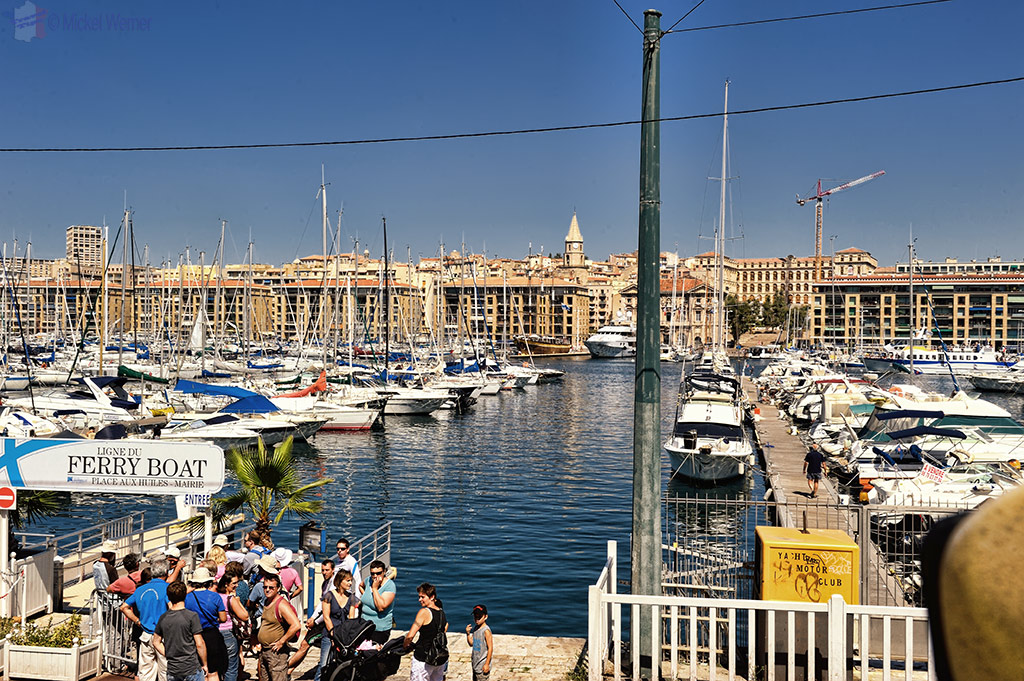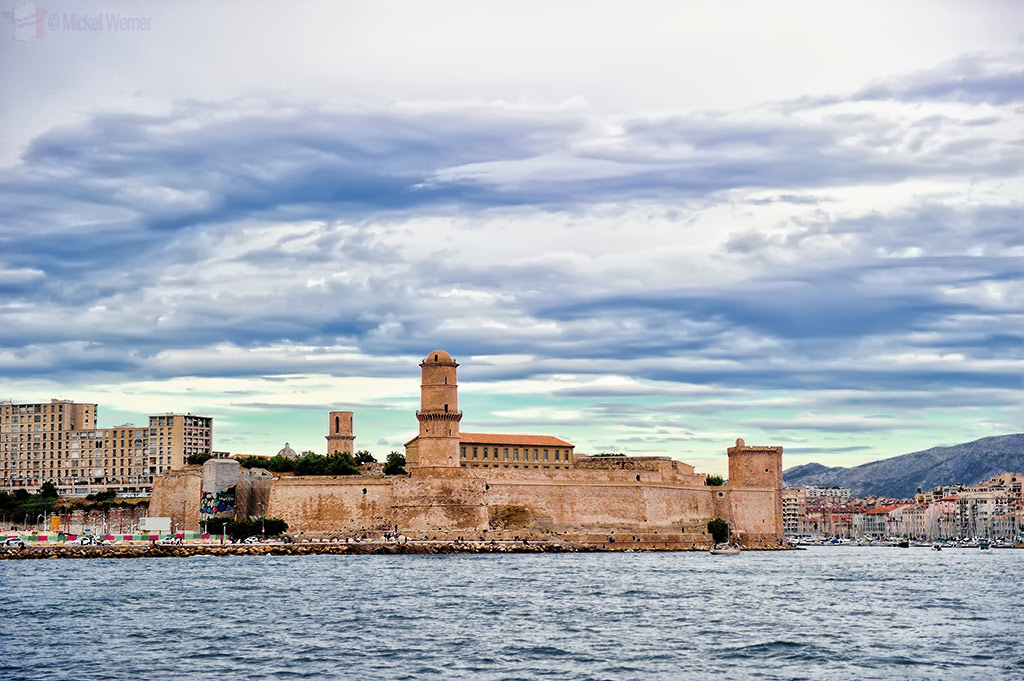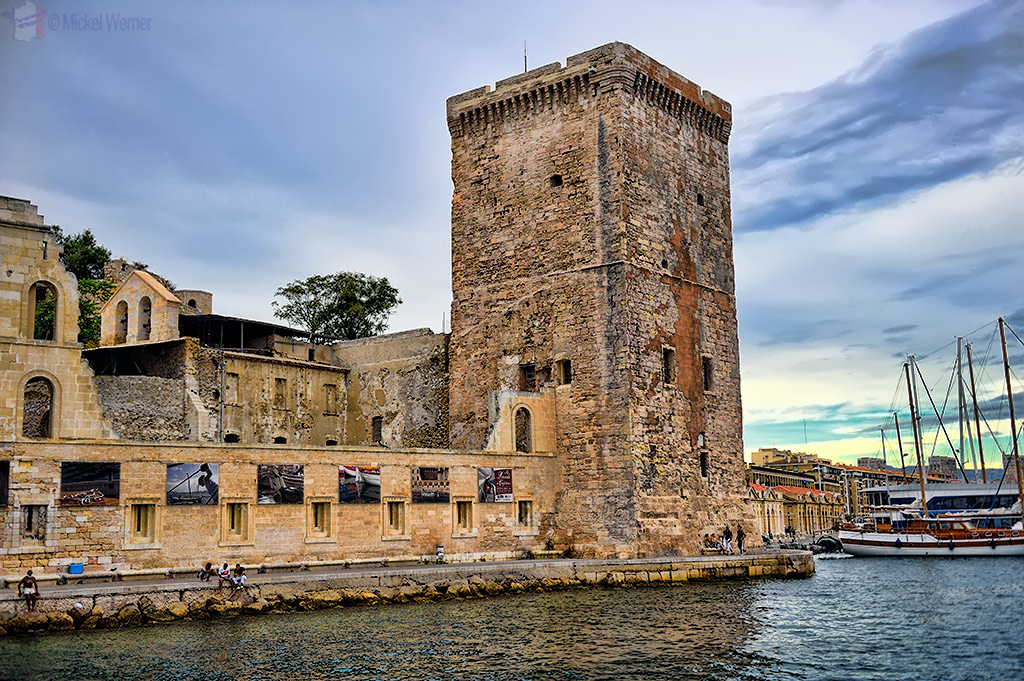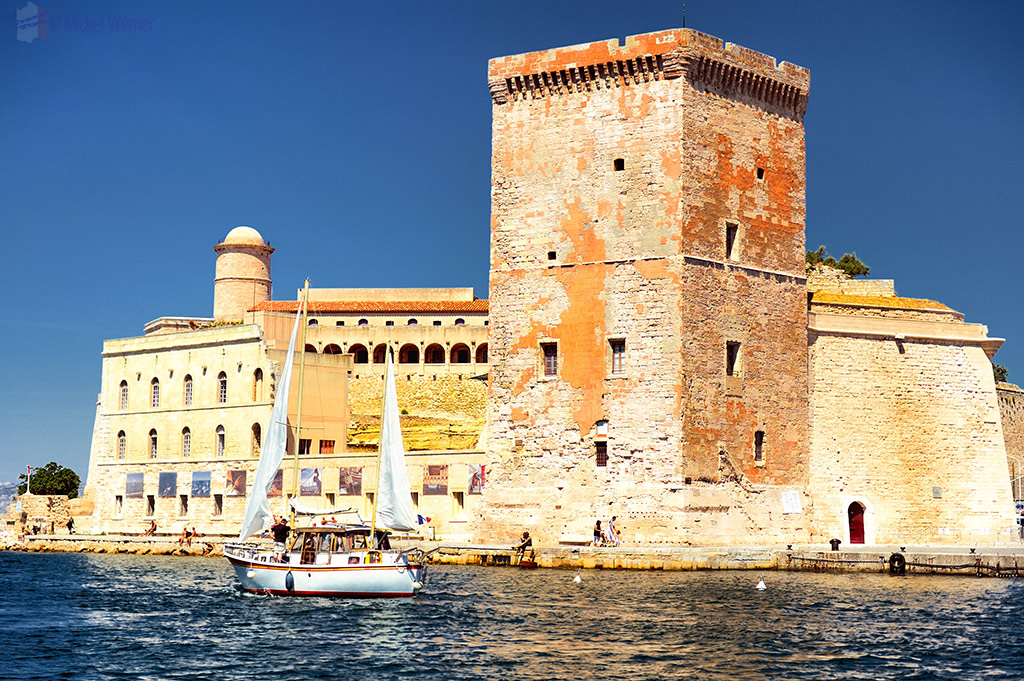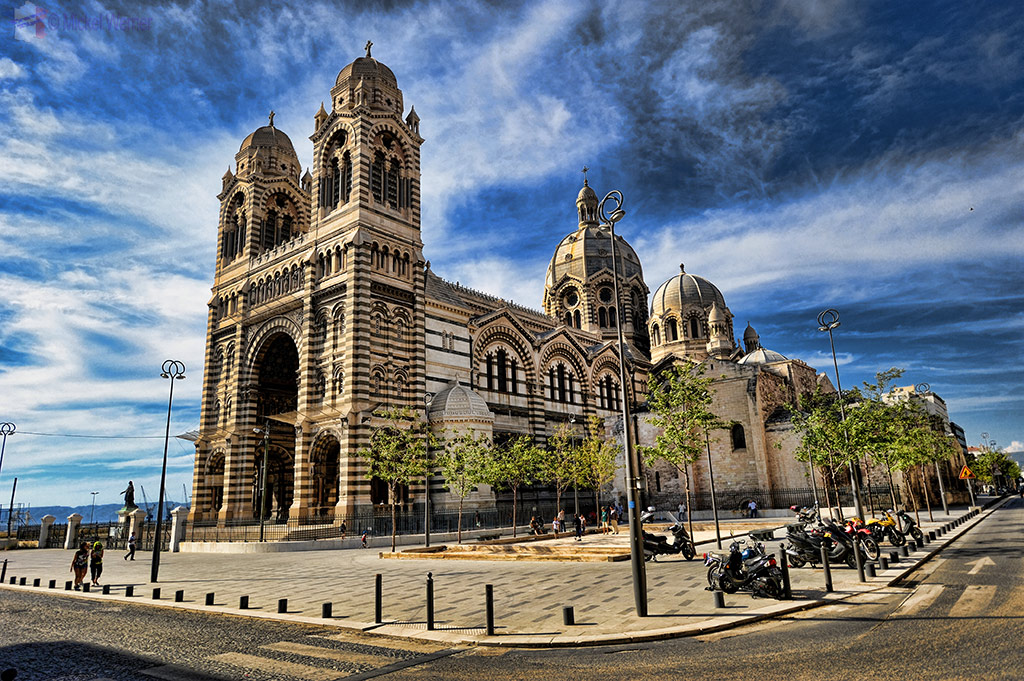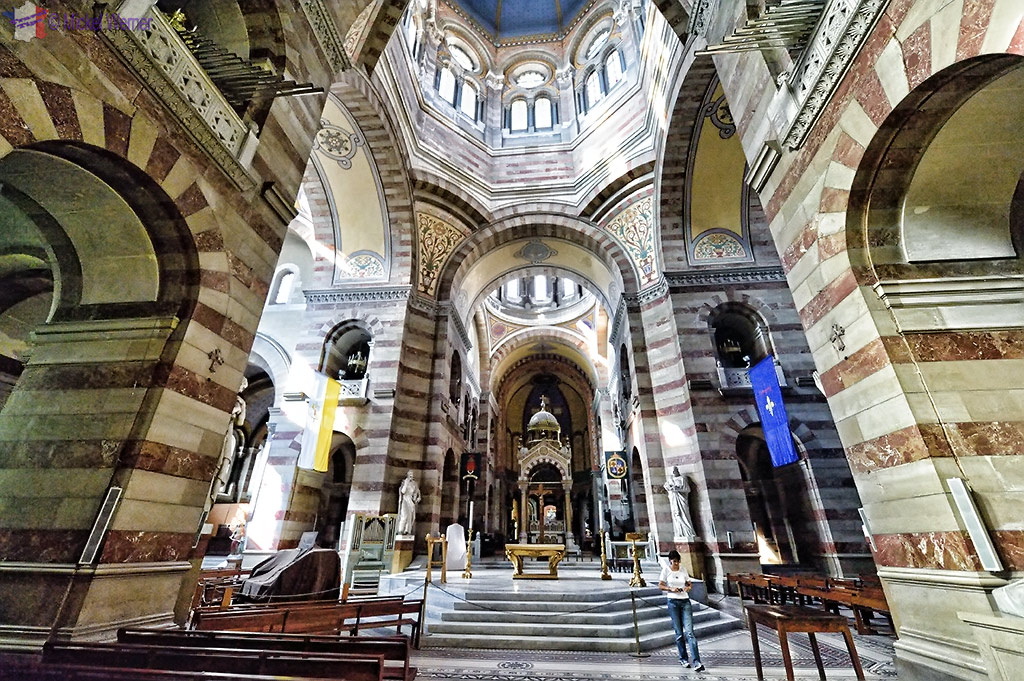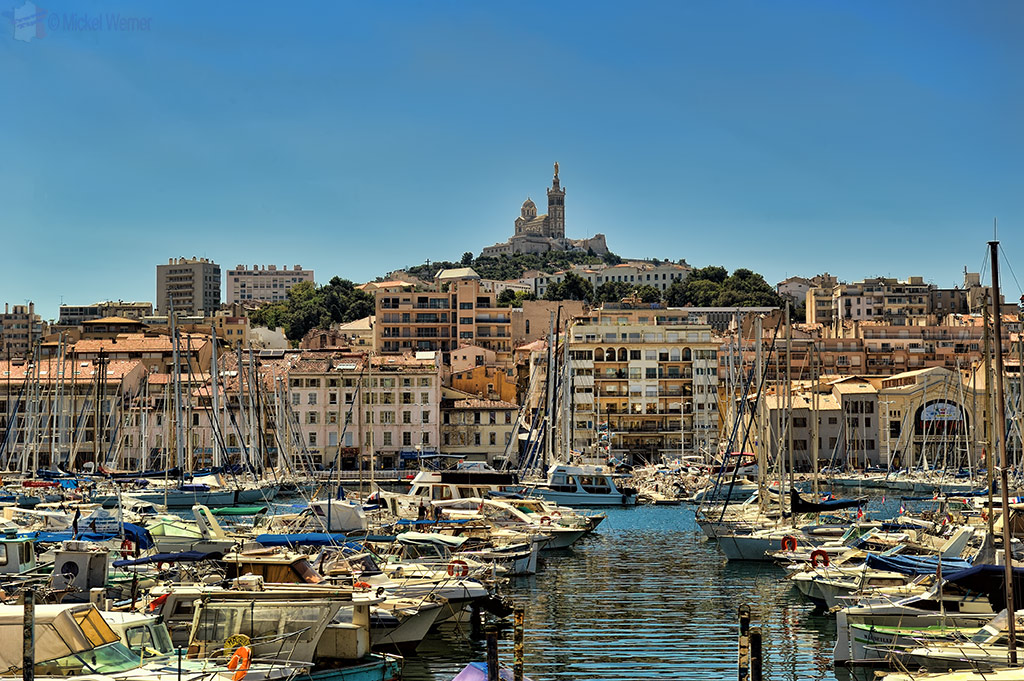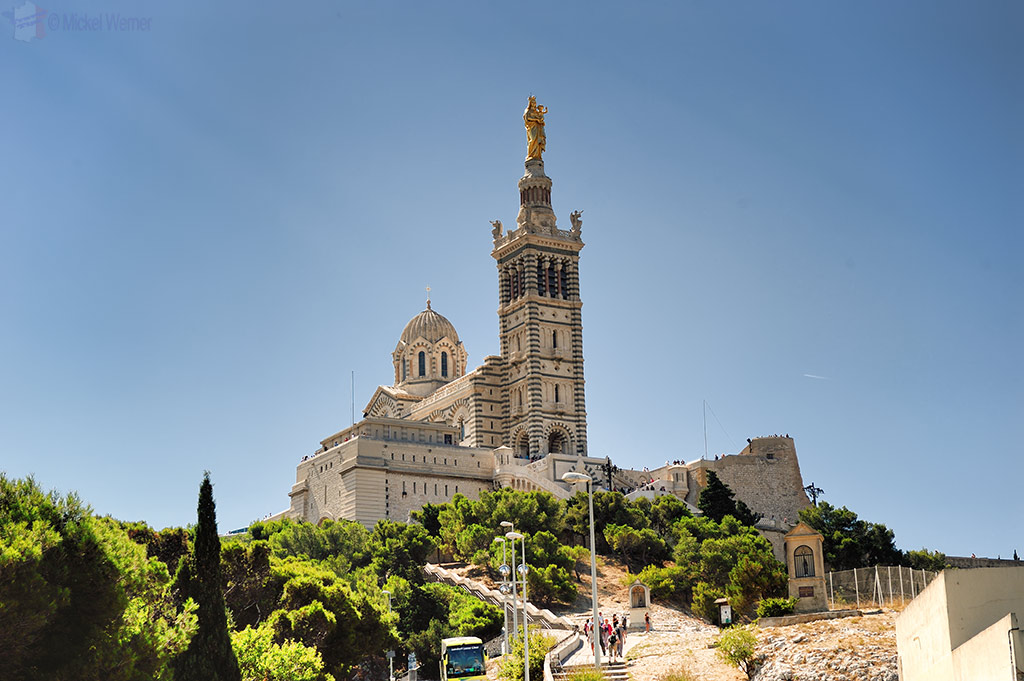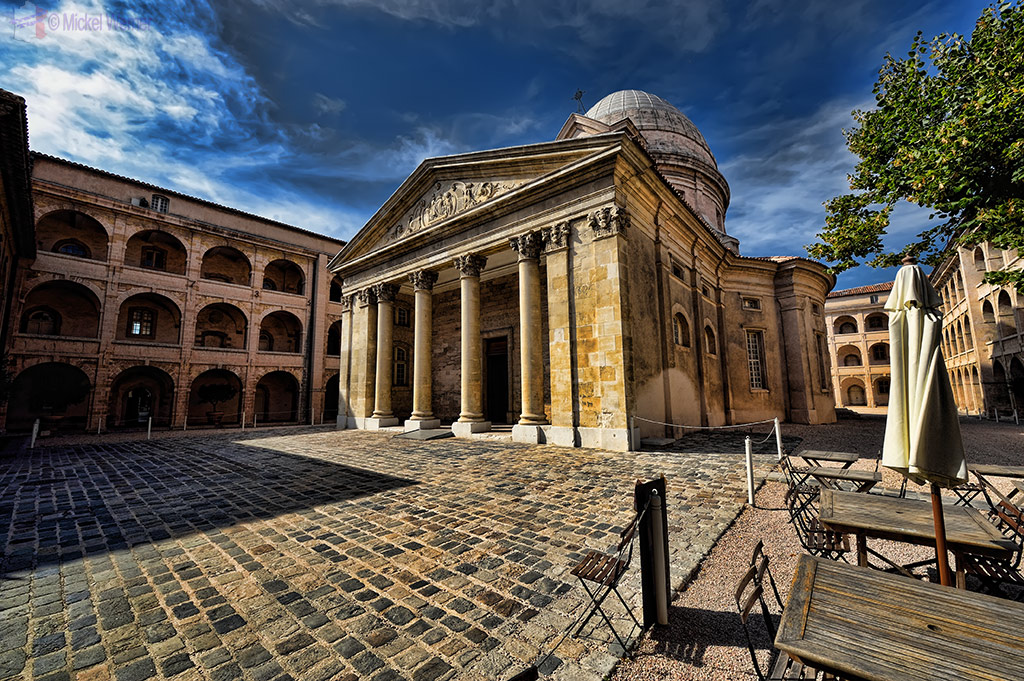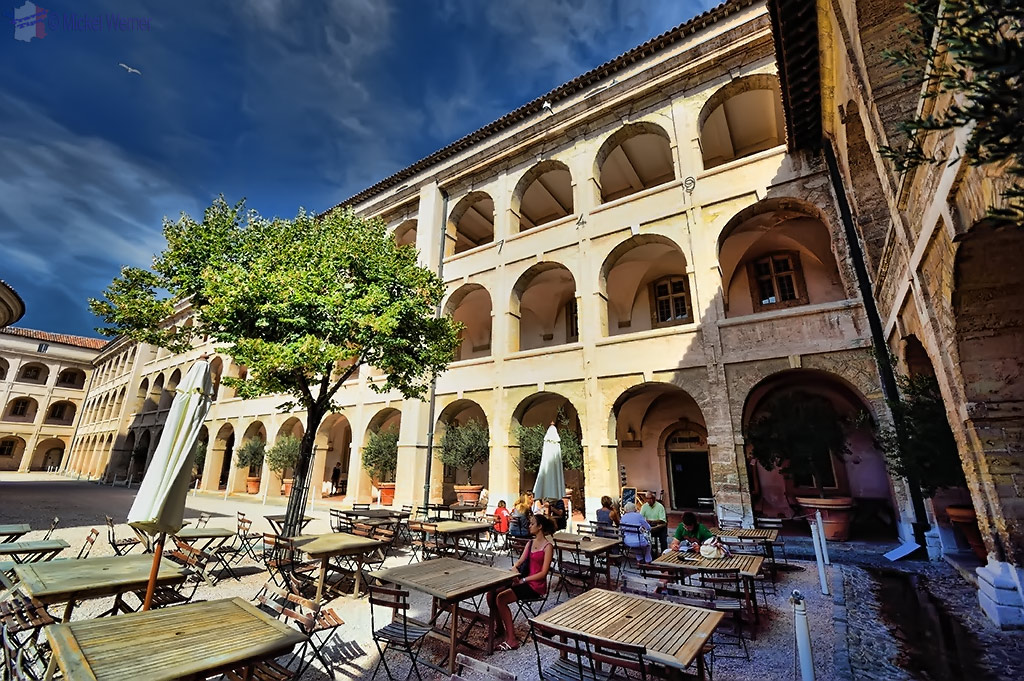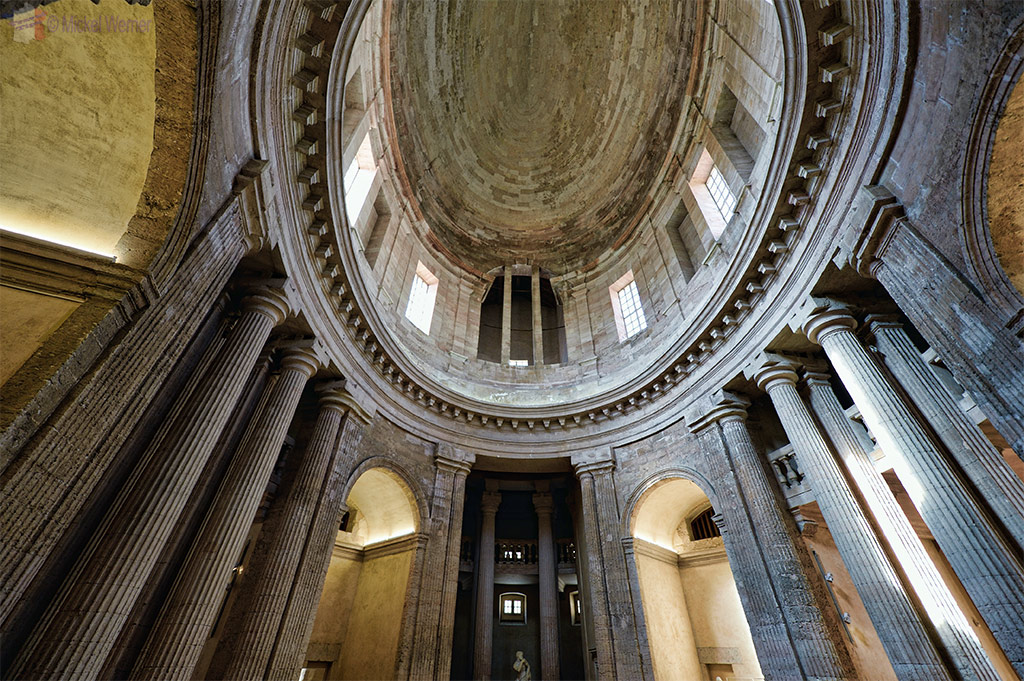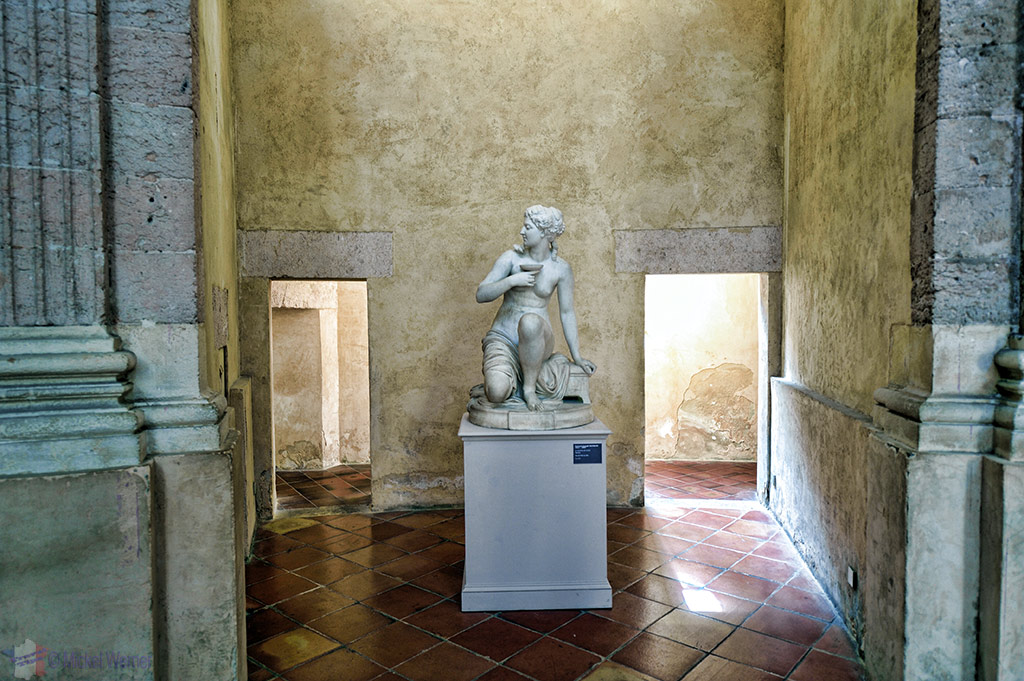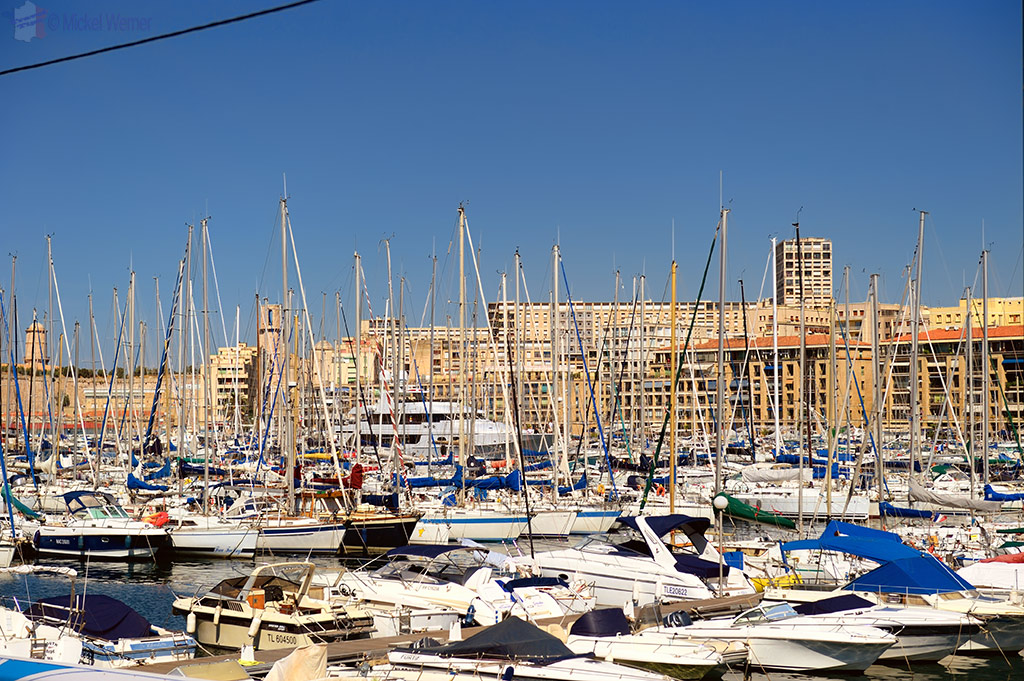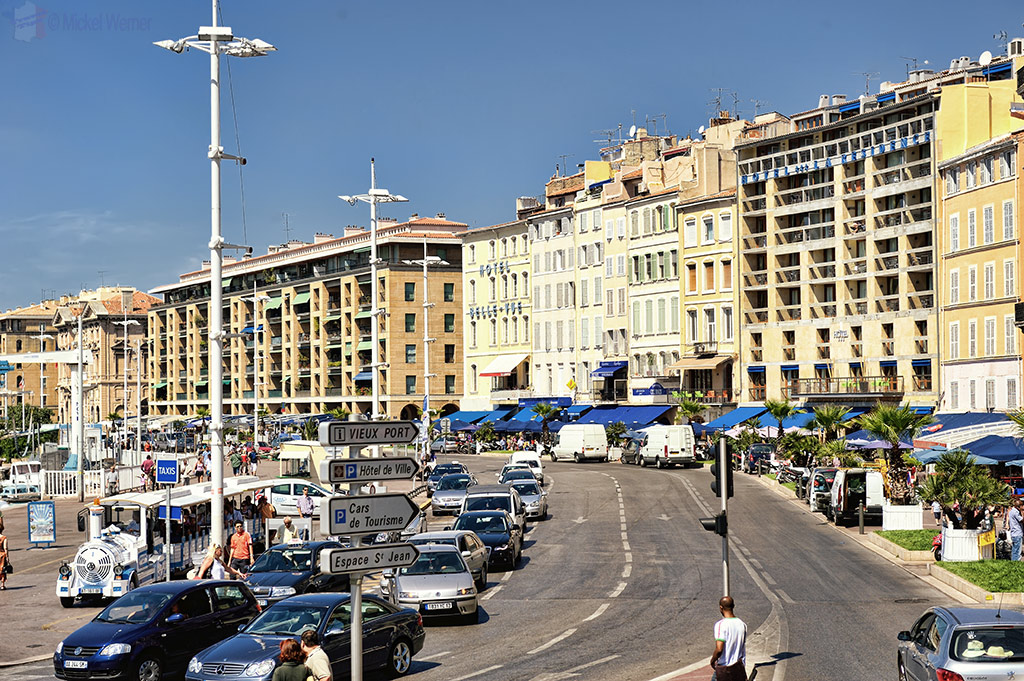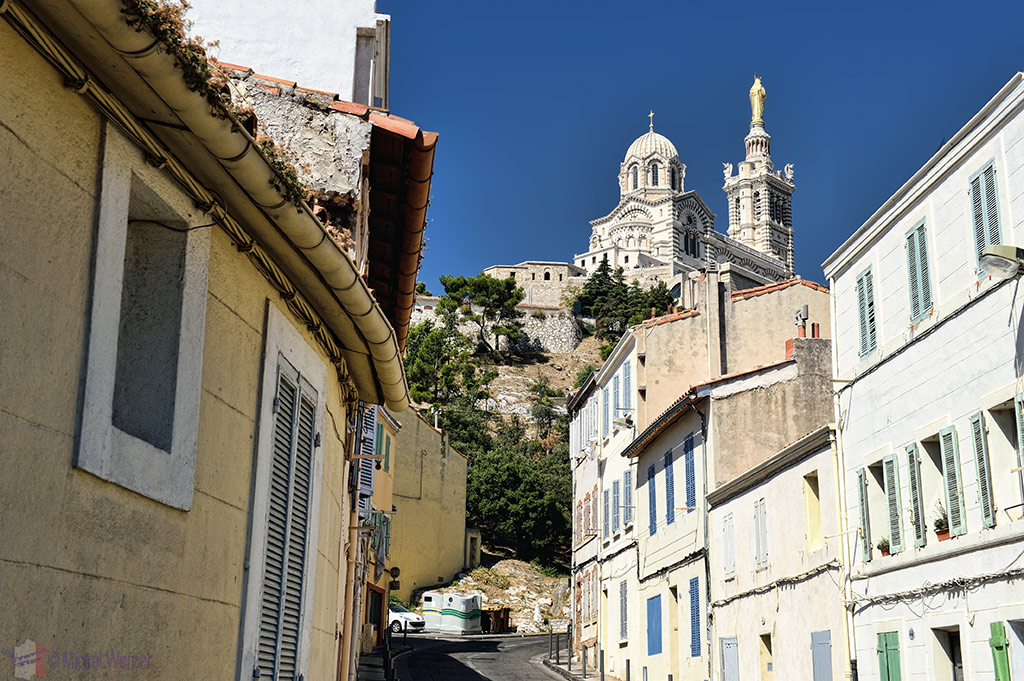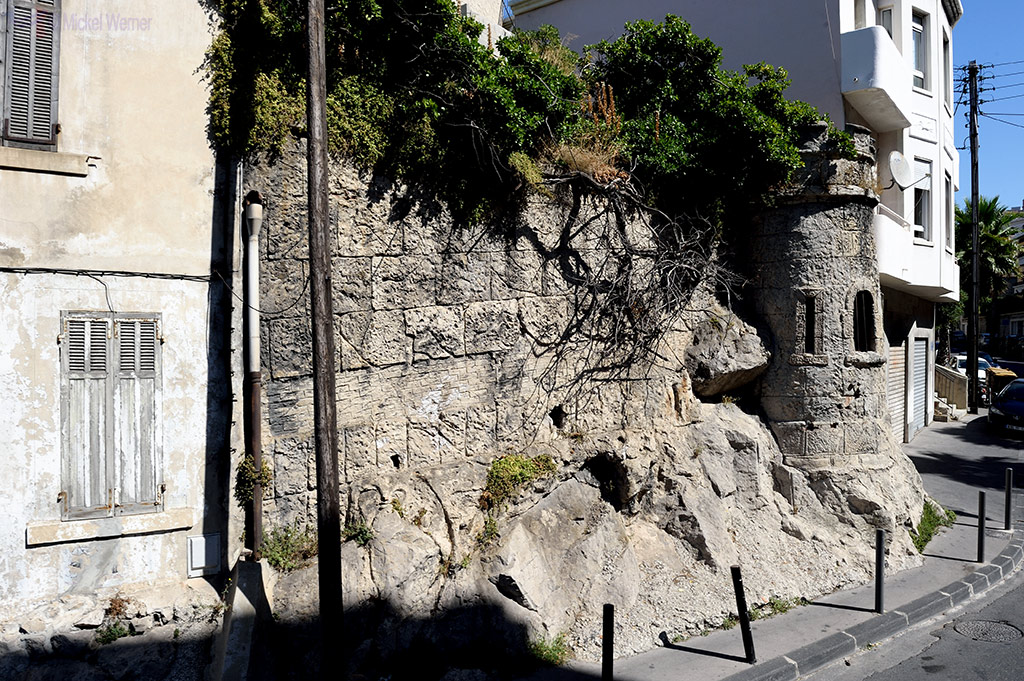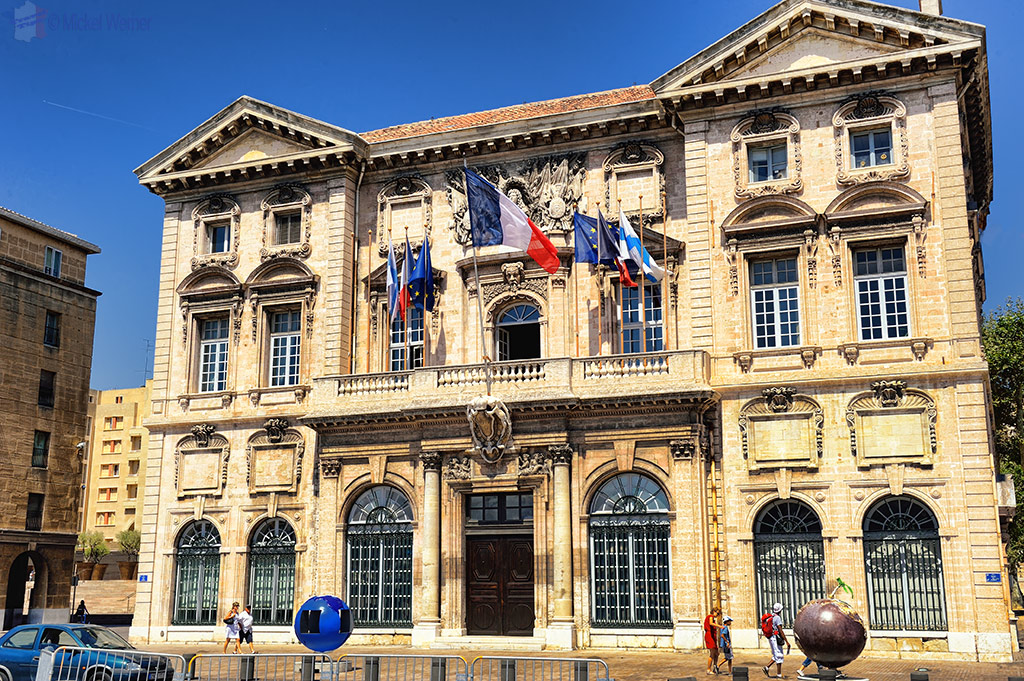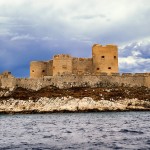Marseille is France’s 2nd largest city in population (over 800,000 inhabitants in the city), and France’s biggest harbour. It is also one of the oldest dwellings in France, with cave painting found dating back 30,000 years BC. It doesn’t get any older than that.
NOTE: Below you’ll find an impression of Marseille, but it’s far from complete. We didn’t have enough time to take more photos, but we will add to this post over time.
The tourist centre and the more interesting parts of Marseille are located around the old harbour (“Vieux Port“).
The inner city and harbours were badly damaged during German bombings in WWII, and in the 50’s Marseille was totally rebuilt. But nevertheless, there are still many old, often majestic buildings left. Marseilles used to be the French gateway into their colonies, and several of the buildings symbolising those days are still standing.
Water dominates the lower part of the city. At the entry of the harbour and city lies the Fort Saint-Jean, a fort that was built in the 12th century to protect the city. In subsequent centuries, the fort was expanded and strengthened. The final modifications were completed in 1679 with a large moat isolating the fort from the land.
The big square tower was commissioned by the King Rene in 1447, while the tall round tower (called the “Tour du Fanal”) was built in 1664.
Today the fort is part of a museum that stretches over the moat and into a modern building. The MuCEM museum is for the “European & Mediterranean Civilisations” and also contains the former Paris based “National Arts and Traditions” museum that transferred to this site. The King Rene tower displays the historical information about the site itself.
Sainte-Marie-Majeure Cathedral
The Sainte-Marie-Majeure Cathedral lies a few hundred metres away from the fort. Quite recent (construction started in 1852 and finished in 1896), although built on older church foundations dating back as far as the 12th century, the Byzantine inspired cathedral is lavishly decorated.
The cathedral is also known as the “Cathedral La Mejor”.
Notre-Dame de la Garde basilica
But the most famous church/building in Marseille is the Notre-Dame de la Garde basilica:
The Notre-Dame de la Garde basilica is the most visible and best known building in Marseille, perched high (147 meters above sea level) above all other buildings, overlooking the city.
Most photos and movies set in Marseille will always show this church.
The basilica is visible for miles at sea. The first stones for the church were placed in the year 1214 and in subsequent centuries the church was expanded. The church is dedicated to sailors, and used by those that escaped drowning to thank the heavens for being spared.
TIP: To visit the church, best is to take the 60 bus line, since it’s a steep walk up.
Another interesting visit is to the “La Vieille Chariteé“, meaning the old almshouse. The Vieille Charitee was built in 1671 for the poor people, especially beggars. The local people did not want to see beggars in their streets. Beggars from elsewhere were escorted out of the city, but the ones who were born in Marseille were placed in this almshouse.
Although it sounds benevolent, the place was actually a sort of a prison. Beggars were rounded up and put in this place. Young kids were taught a profession and sent off to fend for themselves. Some 1000 “inmates” would live here.
The place was used for over a century and it was only after the French revolution that the buildings were transformed into an asylum for the poor children and elderly. It became a place where they could live in some dignity. At the turn of the 20th century, the French army (French Foreign Legion) used it for housing until 1922.
It was only in 1986, after 25 years of refurbishing the buildings, that the city of Marseilles turned the place into multiple museums; the Mediterranean Archaeology museum and Arts from Africa, America and the Pacific museum.
The buildings also house the International Centre of Poetry of Marseille, the International Institute of Audio-Visual Communications and other education organisations.
The Vieille Charitee is within walking distance of the old harbour and cathedral, and the Metro Line #2 stops there (Joilette station).
The city of Marseille is also the capital of the Bouches-du-Rhone “departement“, the USA equivalent would “State“. The prefecture (in USA “Governor”) is housed in this grand building
The building’s construction started in 1860 and finished, after many delays and cost overruns, in 1867. Although it’s not a museum, you can visit the inside and see the amazing sculptures and other artwork.
The Prefecture building is at a stone’s throw from the old harbour and located on the Metro Line #1, Estrangin station.
The Habours
There are many harbours, most of them small, in and around Marseille. We’ll not talk about the big commercial harbours, but the ones tourists like to see. The main harbour is the old harbour (“Vieux Port” in French).
The old harbour is located at the end of the most famous street of Marseille, the Canebiere. It’s considered the Champs-Elysee avenue of Marseille and it was built in 1666.
This area is where you will find many hotels and restaurants. It can get quite crowded in the summer, but it’s a worthwhile “hub” for your visits.
Since the harbour is quite big, a walk from one end to the other can take an hour or two.
One of my favourite harbours is this one:
It’s a very small harbour called the “Le Vallon des Auffes“, located about 2.5 kilometres South-East from the Old Harbour. You may recognise it, since it featured in many movies, including “The French Connection”.
To get to this small microcosm of a harbour, you can walk the Corniche du President John Fitzgerald Kennedy:
It’s a worthwhile walk, walking alongside the sea. The walk will offer some of the most beautiful sea landscapes, including several harbours, rocks, beaches, majestic houses, hotels and many restaurants. In total, the length of the Corniche is 3.7 kilometres.
Inside The City
Walking inside the older section of the city can be gratifying for those of you who like architecture; old buildings, smaller streets and interesting shops.
Sometimes parts of the city can surprise you:
But not every road is narrow and crooked:
A quick visit to the City Hall is called for:
The city hall of Marseille (in French it’s called Mairie) is a baroque-style building built in the 17th century.
Summary
Marseille is an amazing city steeped in history. It’s a very scenic city, and it’s known for its fine taste in restaurants and culture. You can spend days in Marseilles and not see the same thing twice.
But we’ll be completing this section more once we visit it again in the Spring.
TIP: When visiting Marseille, stay will inside the lower city. Straying out to the upper levels or suburbs is dangerous since Marseille’s other reputation is that of a very violent city with many gang murders and shootings. Most of the drugs brought into France come via Marseille. In the city centre and lower parts (old harbour area), you are quite safe.
Related Posts
- 10000
- 10000
 Transport Getting There Air: From both Paris airports, many flights per day, direct to Marseille, 1 hour 15. The airport also as many international flights daily. Within Marseille There is a very good transportation system in Marseille, with a very good and encompassing bus route and two metro lines. Prices…
Transport Getting There Air: From both Paris airports, many flights per day, direct to Marseille, 1 hour 15. The airport also as many international flights daily. Within Marseille There is a very good transportation system in Marseille, with a very good and encompassing bus route and two metro lines. Prices… - 10000
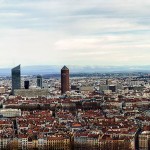 Lyon is a city full of contrasts, particularly in its architecture. The city is big, Lyon itself is France's 3rd largest city, but when you add the suburbs, then the Lyon metropole is France's 2nd largest metropole (after Paris). It is also the world capital of gastronomy, the city where many…
Lyon is a city full of contrasts, particularly in its architecture. The city is big, Lyon itself is France's 3rd largest city, but when you add the suburbs, then the Lyon metropole is France's 2nd largest metropole (after Paris). It is also the world capital of gastronomy, the city where many…

